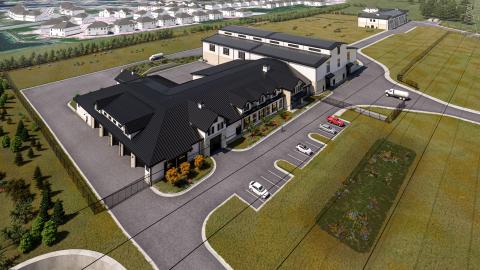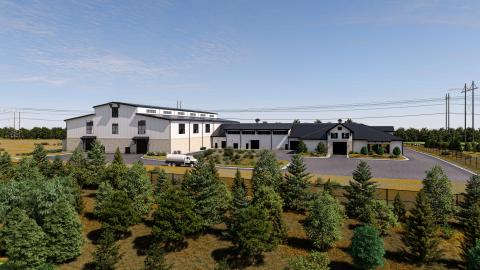Woodbury PFAS Water Treatment Project
Jacobs is working with the City of Woodbury, Minnesota to design one of the largest drinking water treatment facilities for PFAS removal in the U.S.
The contamination of drinking water with harmful per- and polyfluoroalkyl substances (PFAS) has quickly become a key focus for the global water sector. It is a particular issue in the U.S., where many water systems are now planning PFAS water treatment solutions to protect public health and meet evolving regulations.
One community leading the way with a proactive approach is the City of Woodbury, Minnesota, which Jacobs is supporting with a long-term solution that includes designing one of the nation’s largest water treatment facilities for PFAS removal.
The City of Woodbury is a community located in the southeast Minneapolis/ St. Paul Metropolitan Area (Twin Cities) and home to approximately 80,000 people. PFAS were first detected in drinking water supplies in the eastern Twin Cities area in 2004, with subsequent research helping to identify the source and level of contamination. Most of the contamination was traced to dump sites or landfills that had been used by 3M manufacturing facilities to dispose of PFAS-laden wastes. The State of Minnesota recently settled a lawsuit with 3M requiring financial support for residents and municipalities impacted by the PFAS contamination plume – including the City of Woodbury and its contaminated groundwater supply.
In response, the city is pursuing a long-term water treatment solution to remove PFAS contaminants from its drinking water and restore production capacity in a fast-growing area. Average water samples taken at all of the city’s wells exceed the Minnesota Department of Health’s 2024 Health Based Values for perfluorooctanoic acid (PFOA), while all but three wells exceed the U.S. Environmental Protection Agency’s Maximum Contaminant Levels (MCL) for PFOA. The city currently treats six wells through a temporary water treatment plant and has three additional wellhead treatment facilities. All wells that have received Minnesota Department of Health issued health advisories are being treated.
The city’s long-term PFAS solution involved assessment of raw water supply, future demand and treatment strategies as part of a holistic master planning effort. Jacobs is teamed with AE2S Engineering to complete this critical task for the city. Jacobs is providing services including senior technical expertise for PFAS treatment technologies, design (process, architectural, structural, plumbing, HVAC) and cost estimating.
The main project component is the construction of a new 32 million gallon per day (mgd) water treatment plant for PFAS removal and 17 miles of new raw and distribution system piping, which Jacobs has designed with AE2S. The overall project cost will approach $300-350 million, paid for in large part by the Minnesota State Settlement with 3M. The plant is designed to be expanded to a future treatment capacity of 48 mgd and provide flexibility for conversion to Ion Exchange (IX) or alternative absorptive media to adapt to changing regulations and treatment technologies.
Jacobs completed design of the new treatment plant in June 2024 and construction is scheduled to commence in late 2024.
Did you know?
-
32
million gallons per day (mgd) treatment capacity – one of the largest plants for PFAS removal in the U.S.
-
$ 300 M
to 350 million, construction cost of the city’s new PFAS water treatment plant and pipelines
-
2004
year that PFAS were first detected in the eastern Twin Cities
“As more communities in the U.S. prepare PFAS treatment solutions to protect public health and meet new regulations, the City of Woodbury’s approach is a model for long-term, large-scale PFAS treatment. As part of our support for the City of Woodbury on this project, we’re designing one of the nation’s largest water treatment plants for PFAS removal, which will improve water quality and capacity for the community and provide flexibility as demand and regulations change.”

















































